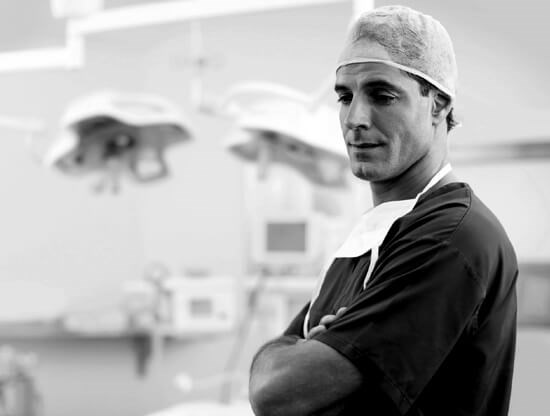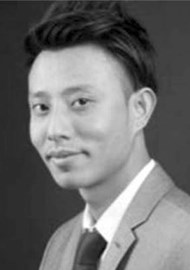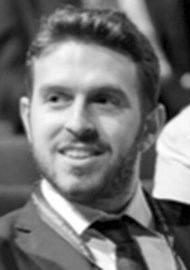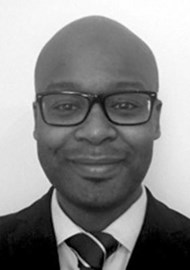“What we mean, man,” said Chuck forcefully, “is this: how can we care for patients if nobody cares for us?” – Samuel Shem, The House of God, 1978.
Samuel Shem’s (Steven Bergman, MD) satirical novel The House of God, has long been a cult classic. A fictionalised account of the author’s internship year, it describes the experience of resident doctors in a 1970’s American teaching hospital. The characters suffer stress and exhaustion, grow increasingly cynical and utilise negative coping strategies.
Although its irreverence generated much controversy, it brought to wider public attention the harsh and dehumanising conditions young doctors were exposed to. We now recognise the negative effects of such working conditions on doctors as physician burnout, a psychological syndrome characterised by emotional exhaustion, depersonalisation, and a feeling of low personal accomplishment [1]. In recent years the problem of physician burnout has come to the fore, with rates exceeding 50% reported across many medical specialties [2,3].

In the August 2019 issue of the BJUI, Marchalik et al. presented findings on the problem of burnout in urology trainees in the USA and Europe [4]. A survey was conducted in the USA and four European countries (Belgium, France, Italy and Portugal). Burnout was assessed using the Maslach Burnout Inventory. Overall, 369 (USA, n=211; European, n=158) urology trainees completed the survey and burnout was observed in 149 trainees (40%), Marchalik, BJUI 2019. There was a degree of variation in the rate of burnout in the countries studied. The highest rate was observed in Portugal (68%) followed by Italy (49%), USA (38%), Belgium (36%) and the lowest rate was observed in France (26%). The overall burnout rate in the USA was 38% whilst in Europe it was 44%.
“Burnout was observed in 149 trainees (40%), Marchalik, BJUI 2019”
Burnout was not associated with gender or level of training, but was associated with a dissatisfaction with work-life balance (WLB). In addition, burnout in Europe was associated with more weekends on-call per month, and in the USA, a lack of access to mental health support services. A lower risk of burnout was associated with reading more non-medical literature and a structured mentorship programme. Residents meeting the criteria for burnout were more likely to report a desire to choose an alternative career to urology.
Burnout was first described by the American psychologist Herbert Freudenberger in his 1980 book, Burnout: The high cost of high achievement. He defined burnout as “the extinction of motivation or incentive, especially where one’s devotion to a cause or relationship fails to produce the desired results”. Since then, this description has been developed by Maslach which includes three main components: 1) emotional exhaustion, 2) depersonalisation, and 3) a feeling of reduced personal accomplishment. This occupational ‘syndrome’ resulting from work-related stress is associated with depression, suicidal ideation, medical errors, poorer quality of care and decreased patient satisfaction [5,6]. Recent evidence suggests that burnout has a high economic impact with estimated annual costs of $4.6 billion in the USA [7].
In recent times, the problem is perceived as having become more acute, a consequence of the highly pressurised environment of modern healthcare systems. Studies have reported associated factors such as, decreased control and autonomy at work and inefficient use of time due to administrative demands. Furthermore, doctors are particularly predisposed to burnout due to inherent traits such as competitiveness, compulsiveness, self-denial, and working in a medical environment that emphasises perfectionism, high responsibility and delayed gratification [8]. In the USA, the burnout rate amongst urologists has increased from 41% in 2011 to 64% in 2014 [2].
High overall burnout rates in urology trainees identified in the recent study by Marchalik et al. once again highlight the importance of this issue and the need for serious attention. From the results of this study we learn that to reduce the risk of burnout, trainees need to be satisfied with their WLB, be in a structured, supportive mentorship programme, find time for non-medical reading, have awareness of the symptoms of burnout and have access to mental health services. Although, not significant in a multiple logistic regression model, exercise and / or yoga, not feeling fatigue and working less hours (i.e. <60h vs. >80h) were associated with no burnout in a univariate analysis. Surprisingly, within Europe, despite the European working time directive (maximum 48 hours / week), 140 (60%) European trainees reported working over 60 hours per week, 18 (11%) reported working over 80 hours per week and 16 (10%) worked three weekends per month.
The situation regarding the rate of burnout, and its associated factors, amongst urology trainees in the UK is less clear. In senior urologists, a joint British and Irish study undertaken in 2016 (n=575) reported a mean emotion exhaustion score of 23.5 (moderate level), a mean depersonalisation score of 8.2 (moderate level) and a mean personal achievement score of 17.1 (high level). Positions of management and leadership were associated with higher reported levels of burnout, and high administration workload, work volume, and lack of institutional resources were identified as the strongest causes of burnout [9].
Doctor’s perceived ‘well-being’ must be recognised as it may impact upon professionalism, patient care and experience and overall quality of healthcare systems. The high rates of burnout amongst trainees, as found by Marchalik and colleagues, should draw the attention of leaders within the profession and policy makers due to its potential adverse effect upon patient care, the mental and physical health of doctors notwithstanding loss of productivity and economic costs. The General Medical Council (GMC) 2014 junior doctor survey found that 8% had experienced bullying whilst a recent study (n=26,021) showed that 13.6% of residents experienced bullying (80% verbal harassment, 5.3% physical harassment, 3.6% sexual harassment) and 57% felt burnout [10,11].
“An alternative term, ‘moral injury’, has been proposed that shifts the onus onto the system”
Burnout should be identified early by trainees and their educational supervisors. Providing support for these individuals is key and should be tailored to the individual situation and may include provision of mental health support and career breaks. Prevention of burnout requires that trainees and supervisors have awareness of and recognise the symptoms of burnout, and that training environments are supportive and include good mentorship. As far as possible, excessive job demands should be tackled, working hours legislation should be adhered to and workplace bullying and harassment should be eliminated.
Finally, the term burnout itself has been criticised as it implies that at the heart of the problem is a failure of the individual to cope with the demands of the job. Rather the problem should be considered to be due to the adverse conditions doctors find themselves working in. An alternative term, ‘moral injury’, has been proposed that shifts the onus onto the system, where there is a critical need to address underlying dysfunctions. Although medicine has always been a career that is associated with hard work and high levels of stress, the stoical attitudes of the past are giving way to a recognition that doctors themselves are at risk of suffering in the process of caring and require support.
References
1. Maslach C, Jackson SE, Schwab RL. Maslach Burnout Inventory: manual. 2nd ed. Palo Alto, CA, USA; Consulting Psychologists Press; 1986.
2. Shanafelt TD, Hasan O, Dyrbye LN, et al. Changes in Burnout and Satisfaction With Work-Life Balance in Physicians and the General US Working Population Between 2011 and 2014. Mayo Clin Proc 2015;90(12):1600-13.
3. West CP, Dyrbye LN, Erwin PJ, Shanafelt TD. Interventions to prevent and reduce physician burnout: a systematic review and meta-analysis. Lancet 2016;388(10057):2272-81.
4. Marchalik D, Goldman C, Carvalho FL, et al. Resident burnout in USA and European urology residents: an international concern. BJU Int 2019;124(2):349-56.
5. Wurm W, Vogel K, Holl A, et al. Depression-Burnout Overlap in Physicians. PLoS One 2016;11(3):e0149913.
6. Panagioti M, Geraghty K, Johnson J, et al. Association Between Physician Burnout and Patient Safety, Professionalism, and Patient Satisfaction: A Systematic Review and Meta-analysis. JAMA Intern Med 2018;178(10):1317-30.
7. Han S, Shanafelt TD, Sinsky CA, et al. Estimating the Attributable Cost of Physician Burnout in the United States. Ann Intern Med 2019;170(11):784.
8. Gazelle G, Liebschutz JM, Riess H. Physician burnout: coaching a way out. J Gen Intern Med 2015;30(4):508‑13.
9. O’Kelly F, Manecksha RP, Quinlan DM, et al. Rates of self-reported ‘burnout’ and causative factors amongst urologists in Ireland and the UK: a comparative cross-sectional study. BJU Int 2016;117(2):363-72.
10. GMC. National training survey 2014: bullying and undermining. 2014.
11. Ayyala MS, Rios R, Wright SM. Perceived Bullying Among Internal Medicine Residents. JAMA 2019;322(6):576.
Declaration of competing interests: None declared.







